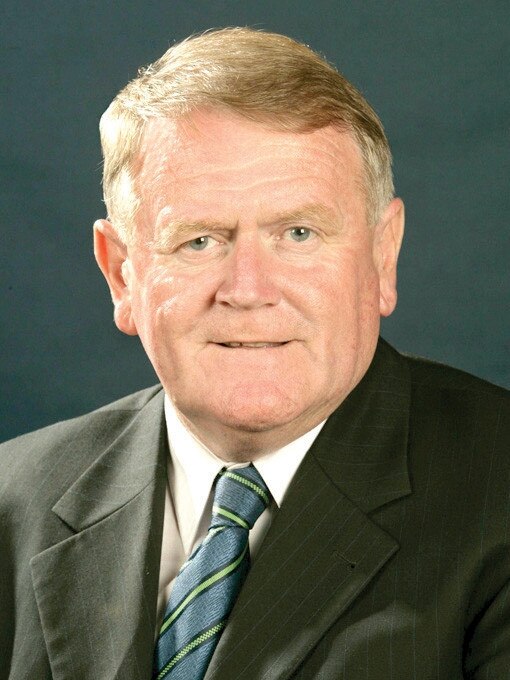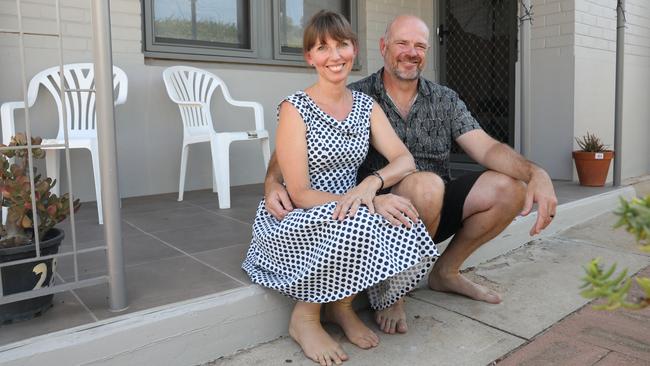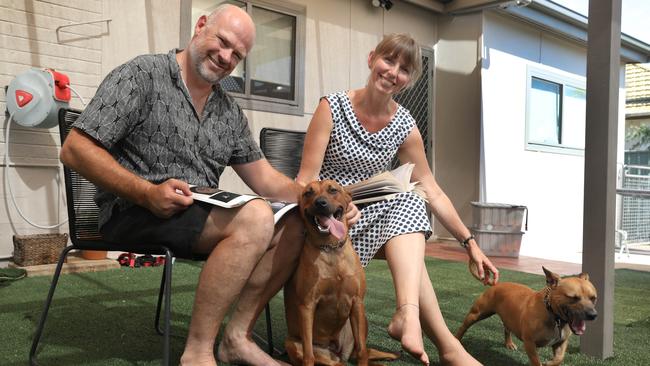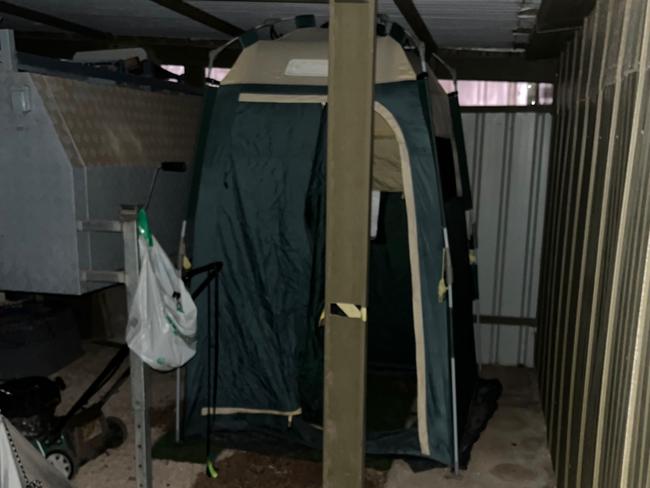Fixing SA’s regional job and housing shortage would ‘deliver $44bn to state economy’
SA’s struggling regions are besieged by twin shortages of both workers and housing – but fix that problem, and the state would see billions in investment sweep though.
SA News
Don't miss out on the headlines from SA News. Followed categories will be added to My News.
Fixing a chronic shortage of workers and housing across country South Australia will help turbocharge the state’s economy and deliver more than $44bn worth of future projects, community leaders say.
Official figures show almost 36,300 regional jobs were vacant in the past year with the biggest staff shortages in the Barossa Valley, Murraylands, Riverland and South-East.
With an average country unemployment rate of just 3 per cent, almost all industries are experiencing shortages but the most acute are in agriculture, medical, construction and hospitality. There are six jobs available for every current agriculture graduate.
Regional Development Australia, a country network funded in SA by the three levels of government, estimates more than 776 projects across regional SA worth $44.7bn are slated over the next five years.
Calling for specialised tax breaks and waiving of government charges such as stamp duty, industry leaders have revealed desperate farmers and business owners have bought their own worker accommodation to ensure they can recruit staff.
As some country residents wait more than three years to build a house, rental vacancies are at a 16-year low.

Regional Development Australia’s SA chairman, former premier Rob Kerin, said it was a “wicked problem” in every country area that threatened investment worth billions of dollars.
“It’s stifling growth, that’s really the issue,” he said. “It’s very hard to build your business. It’s hard enough to get workers anyway, but when you do it’s just as hard to house them.
“It’s a bloody nightmare and really frustrating.”
Federal Liberal MP for Barker, Tony Pasin, said the housing shortage was his electorate’s main issue from the Barossa Valley and Riverland to the Murraylands and South-East.
He said worker programs, such as the Pacific Australia Labour Mobility scheme, needed to be permanent as the temporary solution was “like putting a Band-Aid on a bullet wound”.
“The single biggest handbrake on regional communities in SA is a lack of accommodation and employers complaining that jobs are going unfulfilled,” he said.
“More worryingly is they (businesses) are deferring investment decisions because they will not be able to meet their contracts.
“This issue is having a serious impact on virtually all regional communities.”
There are about 481,000 people living in regional South Australians, which is 27 per cent of the state’s population, according to the 2021 Census.
A quarter of SA’s $118bn gross state product is generated in the regions, government data shows.
Despite rising interest rates, Elders state manager Philip Keen said regional SA was the country’s best-performing housing market last year as prices spiked 15 per cent.
Underscoring the extreme demand for houses and a lack of supply, he said many country renters were on tenant waiting lists. There were just 288 available rental properties across regional SA in December, the lowest vacancy rate since 2007.
Primary Producers SA chairman Professor Simon Maddocks said availability of adequate housing was a “major challenge”, particularly during vintage and harvest.
Further pressure has been heaped on country housing stocks after an influx of city residents during the pandemic and those who can’t afford a metropolitan property, he said.
He called for more regional workers with hi-tech skills and those who could do basic production work.
“There’s an age-old problem of how to get people to understand agriculture is not just about dust, dirt and work boots,” he said.
Citrus SA chairman Mark Doecke, who is a Riverland farmer, said he takes weekly phone calls from workers wanting a home, including one last week for accommodation for May’s picking season.

Opposition Leader David Speirs has tasked new MP Sam Telfer with overseeing a state migration strategy.
“It has crept up quite rapidly but it needs some pretty significant and deft policy solutions,” he said.
In separate statements, Skills Minister Blair Boyer, Human Services Minister Nat Cook and Regional Development Minister Clare Scriven said the government was tackling the crisis.
Ms Cook said at least 150 extra public homes would be built in the country under a $177.5m public housing fund – 10 of which are under construction in Mt Gambier.
Mr Boyer said the government had spent $208m on three Adelaide, and two country-based, technical colleges. Almost $34m is also being spent on various training programs.
“As a nation we are facing the most acute skills shortages in decades and the key to addressing this is by rebuilding TAFE, improving completion rates and making our training system more agile and responsive,” he said.
Ms Scriven said pressure on housing was acute: “The complexity of this issue means that we are taking a whole of government approach to this important matter.”
Rental crisis sweeps through Yorke Peninsula
– Eva Blandis
Only eight properties are available to rent across the entire Yorke Peninsula, inhibiting growth in the region and leaving many moving or living there without a roof over their head.
Local real estate leaders say the shortage has inflated prices and forced some moving to the region into expensive short-term accommodation. They say the only solution is to build more homes.
A search on realestate.com.au at the weekend for rental properties on the Yorke Peninsula returned only eight available houses across the entire region.
Elders Real Estate Yorke Peninsula principal Len Easther said a rental shortage started emerging before Covid and the pandemic had exacerbated it.
“We just don’t have any vacancies, we haven’t had vacancies or problems filling vacancies for about two years,” he said.
“A few of our landlords have decided to sell because of the way the market is and the people buying them, are buying them for holiday homes.”
Mr Easther said more houses had to be built to meet the high demand.

Ray White Yorke Peninsula property management team leader Brooke Neale described the rental crisis as “really, really bad”.
“Two years ago it would not be uncommon to have 24 rental properties available in just the Copper Coast area, now you’re lucky to find two or three,” she said.
“The average rental price was about $250 a week two years ago, the average rental price at the moment is about $350 a week. A lot of people are struggling also because of the price.”
Ms Neale said many people were having to fork out a lot of money for short-term accommodation.

Kalie Ashenden and her husband Will decided to move to Kadina, from Queensland, with their dogs Latch and Frank, last year to be closer to family.
The couple was unable to find a rental property in the area for six months, forcing them to camp in Ms Ashenden’s mother’s backyard.
“We found three available rentals in six months that would consider pets,” Ms Ashenden said.
She said they had lost hope of finding a rental by around Christmas last year and it had an effect on their mental health.


After a six-month search, they secured a rental in Port Broughton about a fortnight ago.
“It’s made a difference to our wellbeing because we’re now in a position where we have space,” Ms Ashenden said.
Single mum Deni Penhall was also left without housing when the owner of her North Beach rental chose not to renew the lease.
“It was heartbreaking when they told me,” Ms Penhall said.
Ms Penhall and her 8-year-old son Riley still haven’t found a rental property and have since moved in with family.





